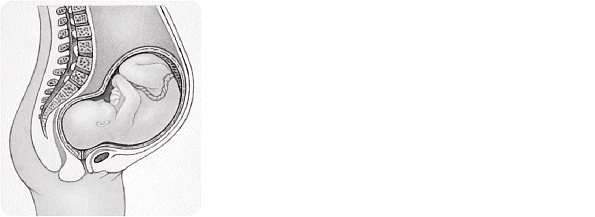FRIDAY, DAY 5
SEXUALITY AND REPRODUCTION
Uterus
When you think of powerful muscles, bulging biceps or rippling abdominals are probably the first things to come to mind. But some of the strongest muscles in a woman’s body are found in her uterus, a 3-inch-long reproductive organ shaped like an upside-down pear. Consisting mainly of smooth muscle, the uterus primarily provides a place for a pregnancy to develop. These muscles stretch like taffy to accommodate a growing fetus and then contract forcefully to push the baby out during labor and delivery.

Also known as the womb, the uterus rests between the bladder and the rectum. The womb’s top stretches toward the ovaries and their egg supply, accessed via the fallopian tubes; the bottom of the uterus curves into the narrow cervix, which leads to the vagina. (Science has debunked many theories regarding these organs over the centuries: In the 6th century BC, Egyptian, Greek, and Roman physicians believed that the uterus could detach and roam around the body.)
Lining the interior of this hollow organ is the endometrium, a layer of pink cells placed next to each other like tiles. After entering the uterus, a fertilized egg (now an embryo) attaches itself to the endometrium. Then the endometrial cells, which are in a tissue rich with blood vessels, gradually cover the precious embryo as it burrows into this layer of cells, seeking blood vessels to supply it with oxygen and nutrients. But if fertilization doesn’t occur, the endometrium’s top layers are expelled from the body during a 3- to 5-day menstrual period. The uterus contracts to shed the unused lining, sometimes causing the woman to have cramps and back pain. New endometrial cells then grow in the uterus, ready for the next cycle of ovulation.
ADDITIONAL FACTS
- In the late 19th century, experts believed that “the evils of masturbation” could lead to uterine diseases and abnormal periods.
- The word uterus is Latin for “belly” or “womb.” When describing more than one uterus, both uteri and uteruses are correct.